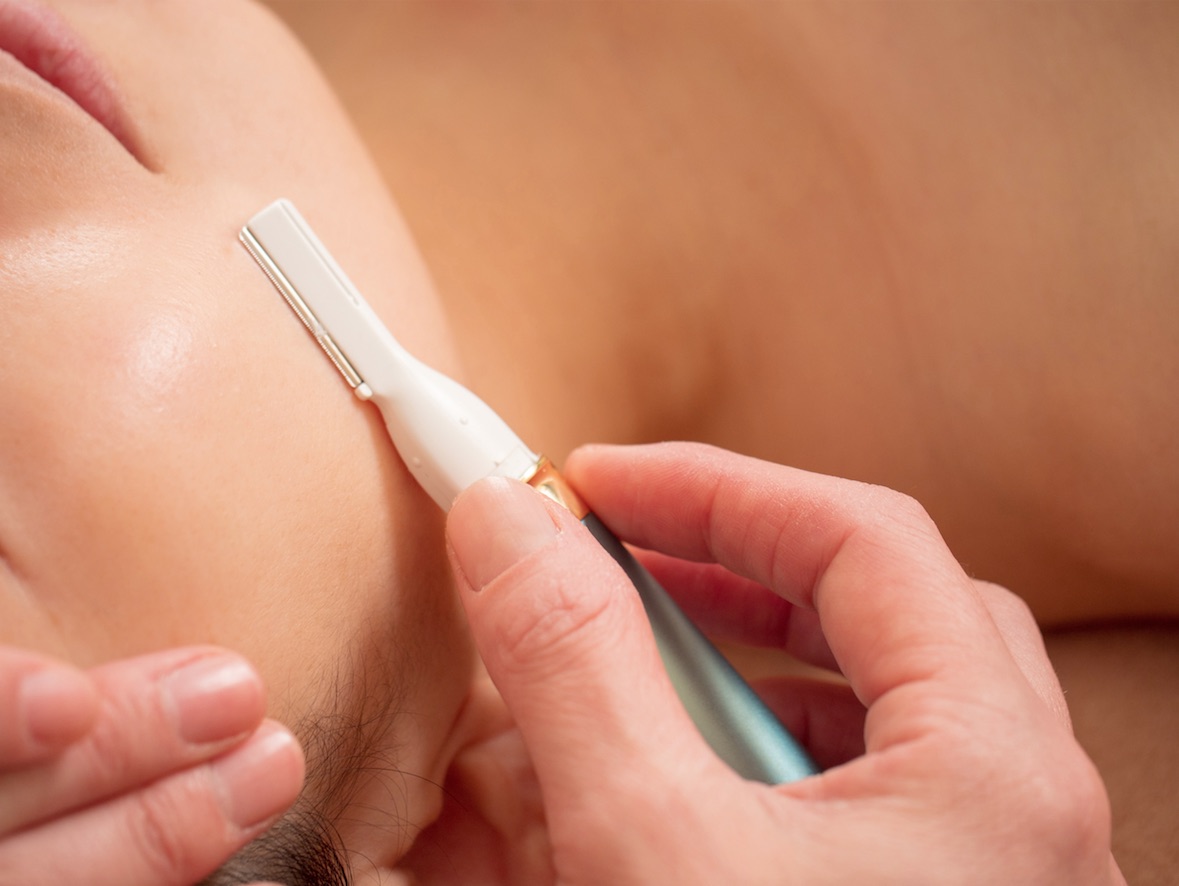What is dermaplaning and why is it good for the skin?

Although dermaplaning is not a new treatment, it’s trending in the beauty industry at the moment as more clients turn to the service to get ultra-smooth and bright skin.
We give you the lowdown on how the treatment removes peach fuzz and dead skin with the scrape of a scalpel and how to successfully offer the service in your salon or spa.
What is dermaplaning?
Google “dermaplaning” and you will be inundated with videos of the treatment and tools being marketed to eager consumers, all wanting in on the latest beauty craze that they’ve seen flood their Instagram feeds.
“Dermaplaning is a mechanical, superficial exfoliation of the skin alongside the removal of vellus hair, also known as peach fuzz,” explains Bianca Estelle, medical aesthetician, skin specialist and founder of Bianca Estelle Aesthetics. “A fine medical-grade blade gently scrapes away dead skin cells on the surface of the skin, revealing a fresher, smoother complexion underneath that is also more even in tone.”
The treatment is a two-in-one exfoliating and hair-removal service and many clients are booking in for it with the fuzz-free benefit in mind. However, the technique can also really work wonders for the complexion too, as Estelle explains.
“It removes fine hair and superficial skin cells making the skin appear brighter. A build-up of dead skin cells can clog your pores and follicles, resulting in breakouts, which is why dermaplaning can aid a clearer complexion. It also encourages topical products that are applied post-treatment to work more effectively as they penetrate deeper into the skin.”
How does dermaplaning work?
There are lots of videos online which show the treatment in action, which Estelle says are “pretty mesmerising to watch”. The treatment technique seems simple and is very effective, but only in the right hands.
“When a practitioner carries out dermaplaning, the blade is run over sections of the face in a repetitive motion, gently sloughing off the dead skin cells,” she says. “Another benefit is that make-up will sit more smoothly on top of the skin, providing that all important glow that clients strive for.”
However, that’s not to say that dermaplaning is a one-stop-shop treatment, as Estelle warns. “The closure of clinics earlier this year during the coronavirus pandemic saw a rise in clients purchasing tools to use at home, dermaplaning being one of these, but there’s downsides if this treatment isn’t carried out properly by a qualified professional.”
She adds: “A beauty therapist can carry out a diagnosis on the client and assess whether any underlying medical issues will deem them unsuitable, such as polycystic ovary syndrome which interferes with hair growth.”
The treatment also differs from popular superficial exfoliation techniques such as chemical peels and microdermabrasion in that it uses no chemicals, crystals or suction. Find out how dermaplaning compares with skin-exfoliating treatment microdermabrasion.

Does dermaplaning have any contraindications?
While dermaplaning is a great treatment for most skin types, it shouldn’t be used on anyone with active acne or hypersensitive skin. “This is because it can transfer bacteria, which will cause a wider spread of infection, inflammation and possibly even scarring as a result,” explains Estelle.
“In addition to this, the blade used in dermaplaning must be used correctly – if it catches on the hair or drags on the skin, you could end up with scarring. Lastly, dermaplaning is for use on those with vellus hair and many clients think they have this when in fact, they have a different type of facial hair. If non-vellus hair is dermaplaned then it could lead to thicker regrowth.”
Estelle recommends that beauty salons and clinics should consider pairing dermaplaning with other technologies, such as AHA resurfacers and LED light therapy. “Most treatment combinations can be carried out at the same time,” she says.
“As for frequency, dermaplaning can be carried out every three-to-four weeks, which is achievable for most clients who want to maintain a fuzz-free and glowing face. From a business point of view, this can also help beauty salons and clinics with client retention.”
Homecare post-treatment is also extremely important to help maintain the efficacy of the results. “Advise your clients to use active ingredients that promote cell turnover such as vitamin C, retinol, kojic acid, lactic acid and, of course, an SPF of at least 30, but ideally 50,” says Estelle.
“Clients should be wearing SPF every day, but especially when new skin is exposed to avoid sun damage and pigmentation.”
Are you thinking of adding dermaplaning to your menu? Comment below.


